The Mesmerizing Art of Munakata Shiko
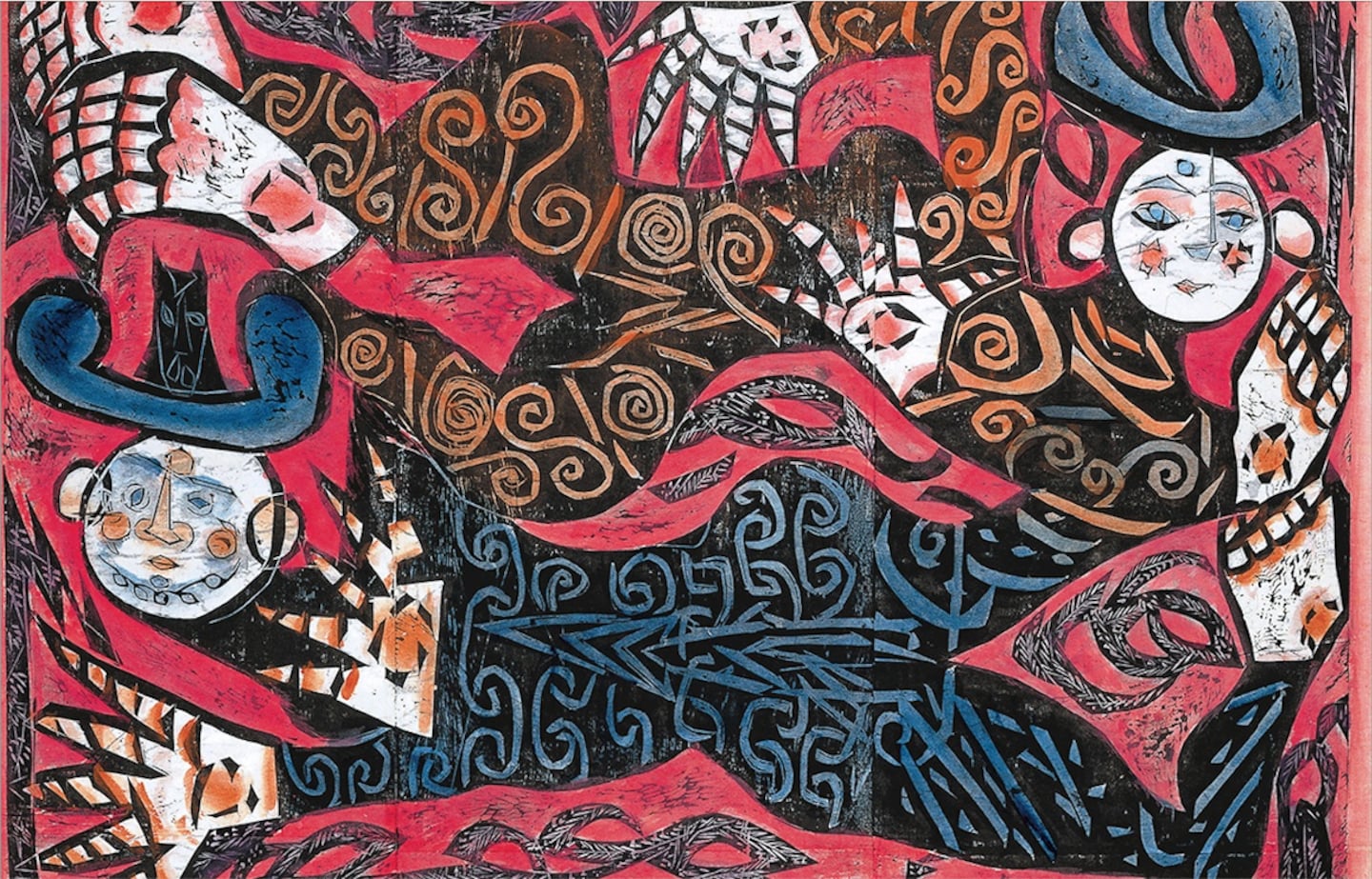
"Oshira-sama: The Flying Silkworm Deities" (1968) by Munakata Shiko. Munakata Memorial Museum of Art.
A major retrospective in Japan traces the life of popular printmaker Munakata Shiko, examining how three places he lived shaped his work and helped propel him to fame and new forms of expression.
Working Woodblocks with Chisels
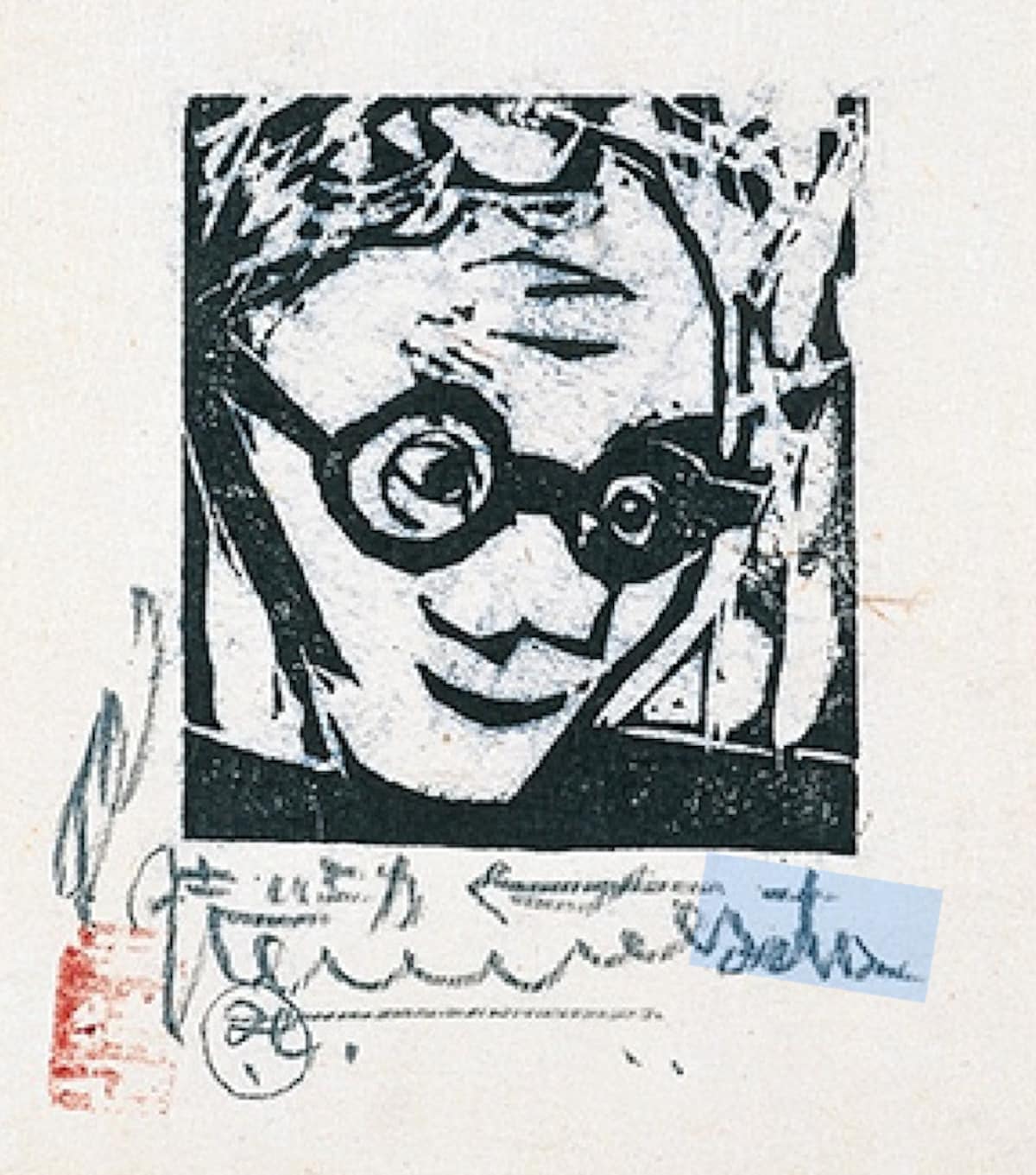
Munakata with his famous round glasses. This 1971 self-portait is titled "A Shining Forehead." Aomori Museum of Art.
One of the most respected and celebrated Japanese creatives of the 20th century is undoubtedly printmaker Munakata Shiko (1903-1975). A self-taught artist who experimented in mediums ranging from oil painting to calligraphy, Munakata gravitated quickly to woodcut printmaking, developing a highly distinctive style characterized by strong, seemingly spontaneous lines and a deeply spiritual energy.
Extraordinarily ambitious, productive, and talented, Munakata achieved remarkable fame within his lifetime and, since his death, has been commemorated by frequent exhibitions. This year, in 2023, a large-scale retrospective brings new focus on how Munakata’s development as an artist was influenced by time and place. Titled The Making of Munakata Shiko: Celebrating the 120th Anniversary of the Artist's Birth—and traveling in sequence to three museums—the exhibition quite literally traces the course of Munakata’s life to locations that were critical in his development: his birthplace in Aomori Prefecture, where he made lifelong connections with young people who shared his interests and went on to become cultural figures; Toyama Prefecture, where he sheltered during the war with other artists; and Tokyo, where he entered into collaborations that propelled him in new directions and advanced his career domestically and internationally.
The Beauty of Nature, Abstracted
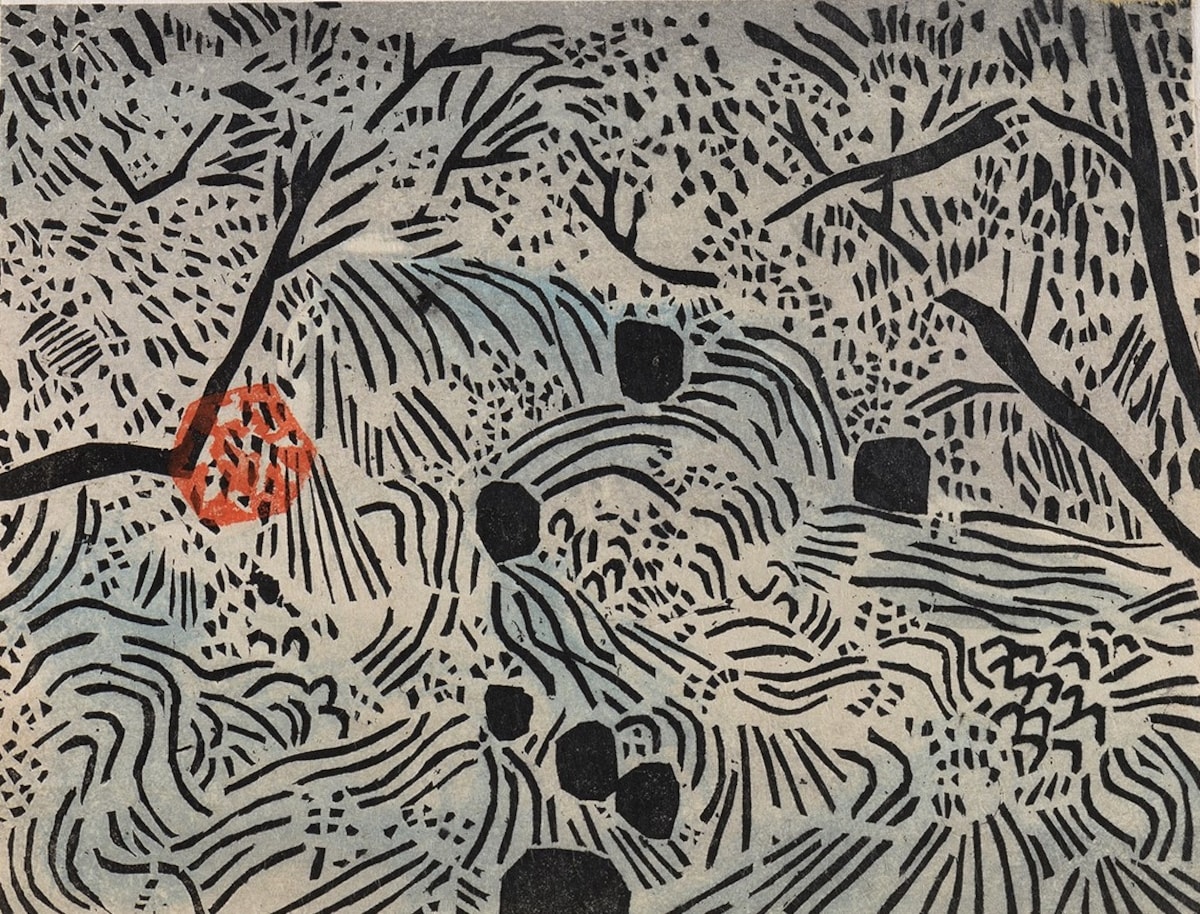
"Oirase River (C)" (1932). Munakata Shiko Memorial Museum of Art.
Munakata Shiko was born in Aomori in 1903, the son of a blacksmith. As a young man he had no clear goals until, astonished upon seeing a reproduction in a Japanese magazine of Van Gogh’s “Sunflowers,” he set his mind to becoming the “Van Gogh of Aomori.” While teaching himself to draw and paint, Munakata developed friendships with other culturally minded people in his hometown and explored with them the innovative art, theater and literature emerging during the Taisho era (1912-1926).
Early in his artistic endeavors Munakata moved away from realism in favor of more abstract ways of representing nature and the human figure. His developing skill in abstract expression can already be seen in his 1932 series on the theme of Aomori’s beautiful Oirase river, in which the speed and force of its waterfalls and rapids are suggested through highly simplified yet dynamic black lines.
Telling Stories Through Woodcuts
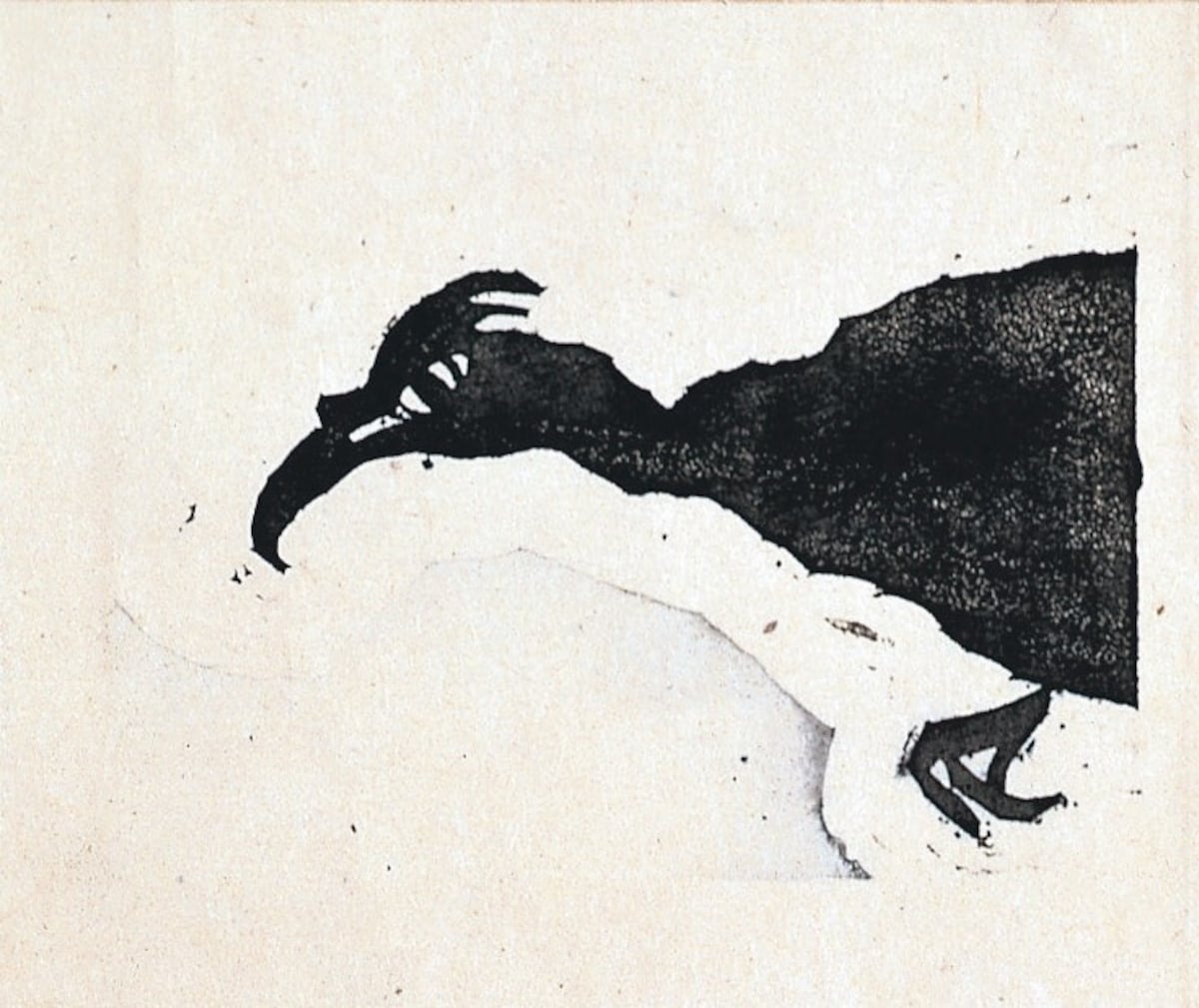
"An Iron Beak" (1938), one in a series of prints titled "The Story of the Cormorant." The theme is borrowed from a Noh play. Munakata Shiko Memorial Museum of Art.
In 1924, Munakata moved to Tokyo. He became active in the sosaku hanga (creative prints) movement, which sought to transform woodblock printing from a form of cheap, mass production with strict division of labor between designer, carver, printer and publisher, into a form of high art that emphasized self-expression and demanded that all steps of production be performed by a single creator. This new wave of printmaking incorporated influences from Western art, and in particular the European avant-garde. Munakata also became acquainted with Yanagi Soetsu, one of the founders of the Mingei folk art movement, who encouraged Munakata's interest in themes from Buddhism and folklore.
While living in Tokyo, Munakata began producing series of prints on a single theme, developing skill in telling complex stories through powerful compositions in black and white. In 1938, his series “The Story of the Cormorant,” based on a Noh play, won a special prize at the second New Ministry of Education Fine Arts Exhibition. It was the first print work to win an award at a government-sponsored exhibition, raising Munakata's stature and giving new legitimacy to printmaking as art.
War Brings Loss But Also Gains
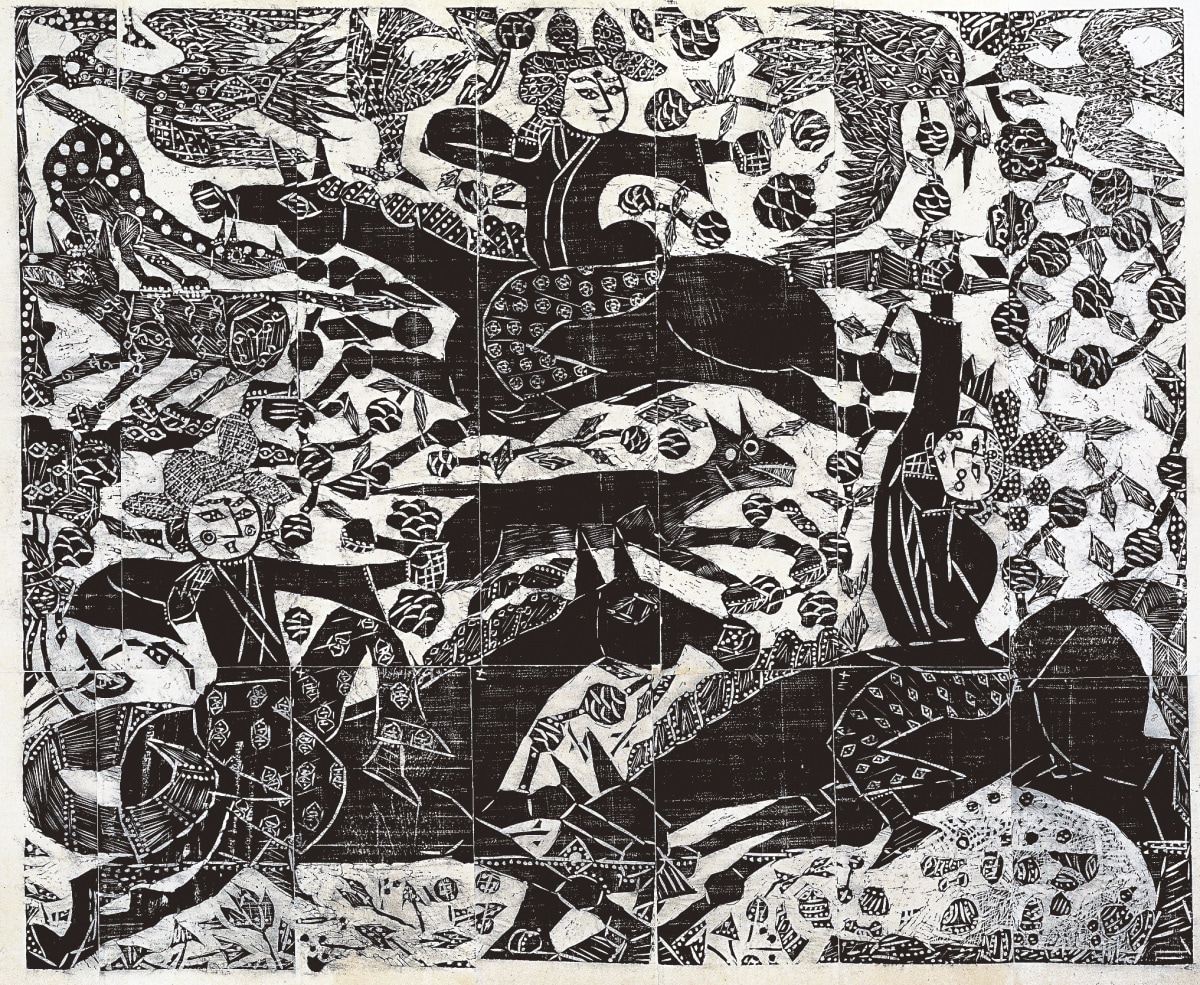
"In Praise of Flower Hunting" (1954). Munakata Shiko Memorial Museum of Art
In April 1945, as the war's end approached and air raids intensified, Munakata and his family had to flee the city. With the assistance of the abbot of a Buddhist temple, they evacuated to the town of Fukumitsu in Toyama Prefecture, which was already sheltering a richly cultured group of novelists and artists. The area was also a center for Buddhist learning and devotion, nurturing Munakata's interest in themes from religion and folklore.
Just a month after they evacuated, the family home in Tokyo was destroyed by fire. Most of Munakata's completed woodblocks were lost in the conflagration, and new blocks were hard to come by because of the wartime shortage of wood. Lacking his usual materials, Munakata used the time in Fukumitsu to work with a brush, doing calligraphy and composing sliding-door paintings for the temple that sponsored him. He drew inspiration from the faith and folklore of the local people and, after the war ended, chose to remain in Fukumitsu.
Into the World Beyond Japan
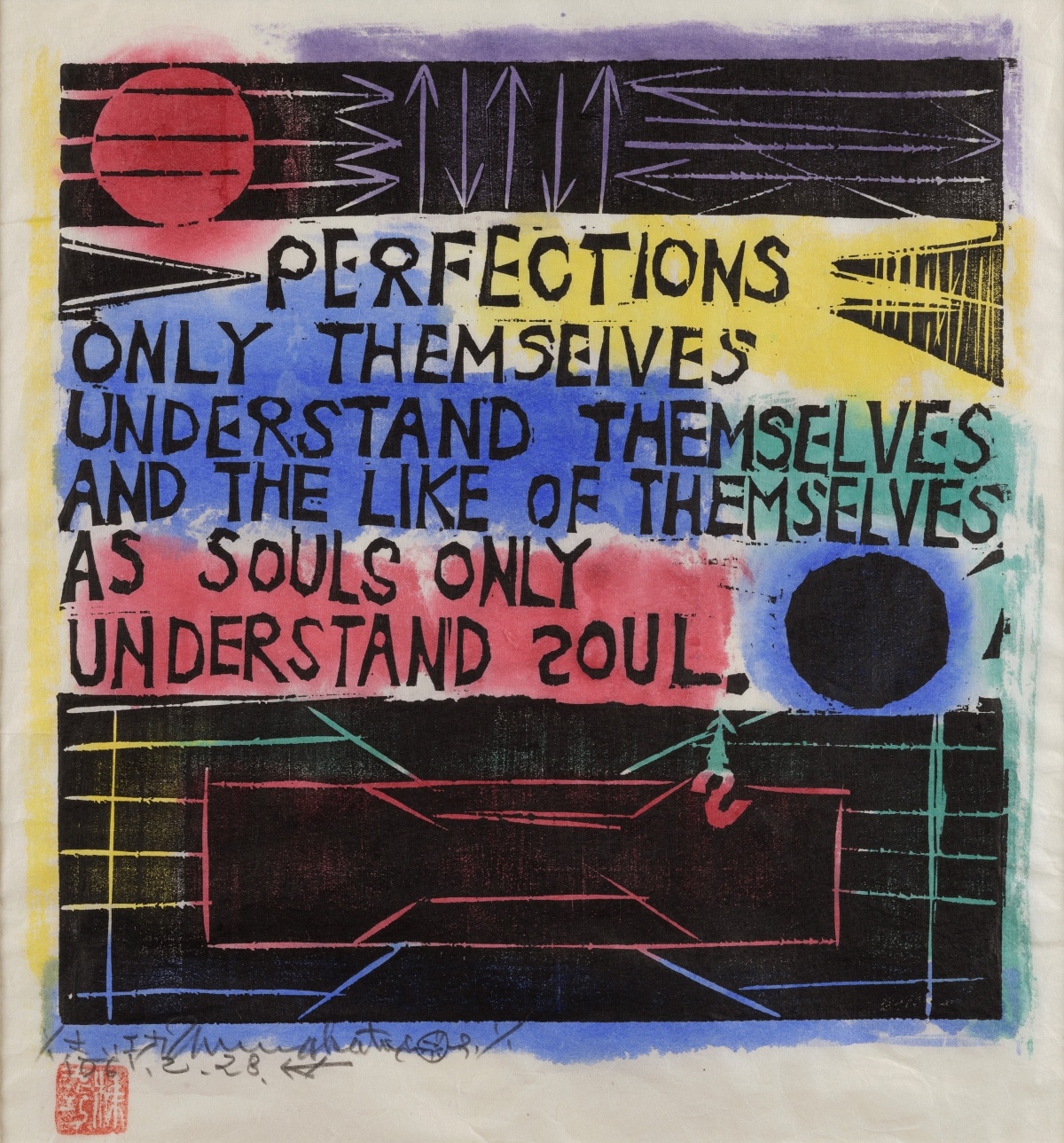
Munakata's interpretation of Walt Whitman’s poem "Perfections," designed in 1959 and printed in 1961. Munakata Shiko Memorial Museum of Art.
In 1951, Munakata finally returned to Tokyo, where the Japanese publishing industry was flourishing thanks to a post-war boom. He was asked to create illustrations for magazines and novels—including Tanizaki Jun'ichiro's spicy story "The Key"—which brought his work to the attention of the general public. As his fame grew, he was also asked to design wrapping paper and shopping bags for venerable confectionary shops and made frequent appearances on radio and television. Internationally, his reputation was established when he won prizes at the Venice Biennale and other international exhibitions,
Munakata had a special fascination with the poetry of the American poet Walt Whitman (1819–1892). When invited to New York in 1959 by the Japan Society, Munakata made a pilgrimage to Whitman’s childhood on Long Island and created a series of prints incorporating lines of poetry from Whitman’s most famous collection, “The Leaves of Grass.” Munakata's tenuous grasp of English is revealed in the reversed letters and other typographical mistakes as he worked Whitman's words into his own designs.
Rarely Seen Masterpieces
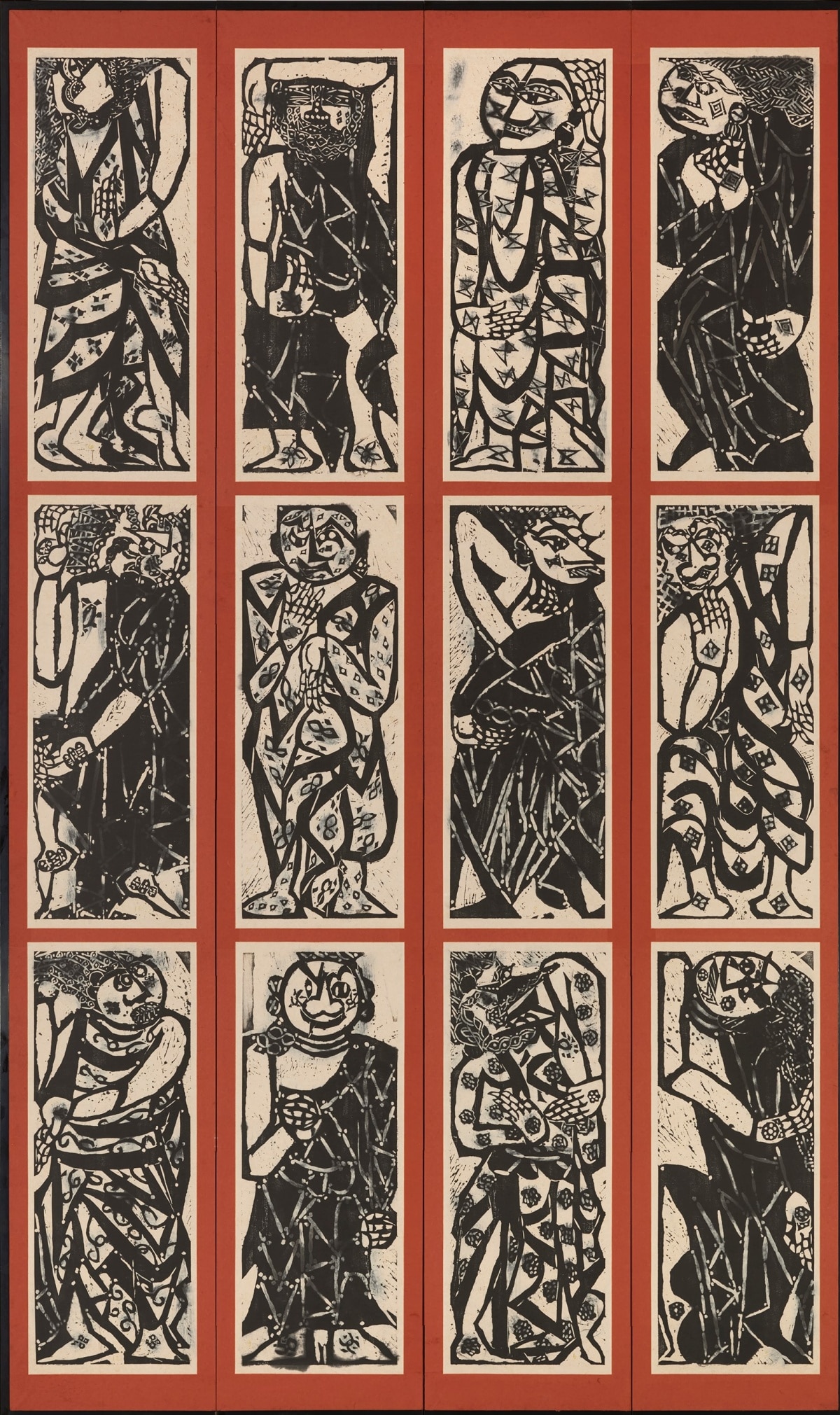
"The Twelve Apostles" (1953). Woodcut prints mounted on a folding screen. The Gotoh Museum.
A very good reason to get to this particular exhibition, if you possibly can, is that it includes several important but rarely seen masterpieces in Munakata’s oeuvre. Of particular note is a folding screen, standing over three meters high, that is being exhibited for the first time in sixty years. Normally kept within the confines of a small private museum in suburban Tokyo, the screen portrays Christ’s apostles in twelve separate panels. From the beginning, Munakata conceived of this series as a single work, alternating the poses and the color of the robes—one in black and the next in white—so the panels would work together as an integrated composition.
Combining prints into large compositions was one of Munakata's most important innovations, successfully transforming a medium normally held in the hand and viewed at close range into a format with maximum impact in public exhibitions. Feeling that power is why we still go to experience art in person.
Go to the exhibition
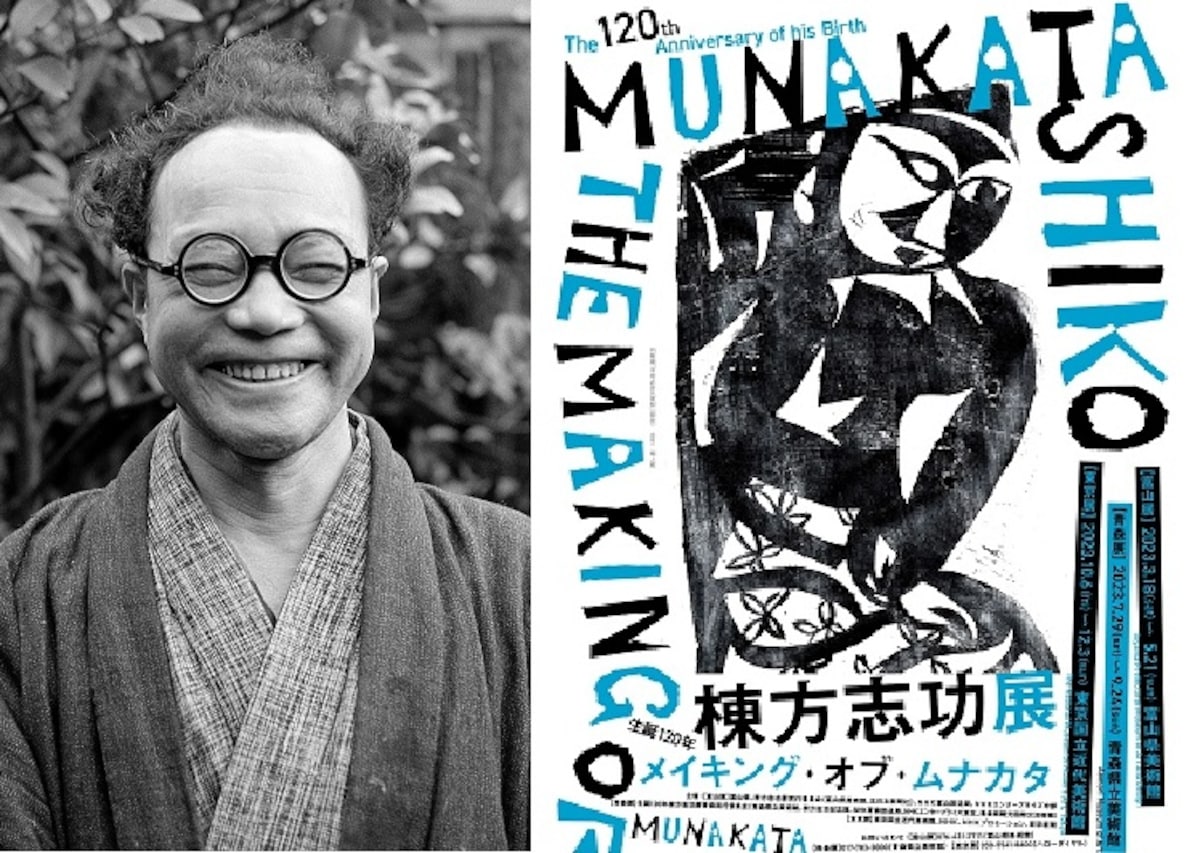
Portrait of Munakata Shiko, taken in 1956 by Harada Tadashige, and the poster for the 2023 exhibition.
The Making of Munakata Shiko: Celebrating the 120th Anniversary of the Artist's Birth is presented jointly by three museums in locations in which the artist spent significant periods of his life. This is the schedule:
Toyama Prefectural Museum of Art and Design (March 18-May 21, 2023)
3-20 Kibamachi, Toyama 930-0806 Japan
+81-(0)76-431-2711
Aomori Museum of Art (July 29-Sept. 24, 2023)
185 Chikano, Yasuta
Aomori City, Aomori Pref. 038-0021, Japan
+81(0)17-783-3000
National Museum of Modern Art, Tokyo (Oct. 6-Dec. 3, 2023)
3-1 Kitanomaru-koen, Chiyoda-ku, Tokyo 102-8322, Japan
+81 (0)50-5541-8600



